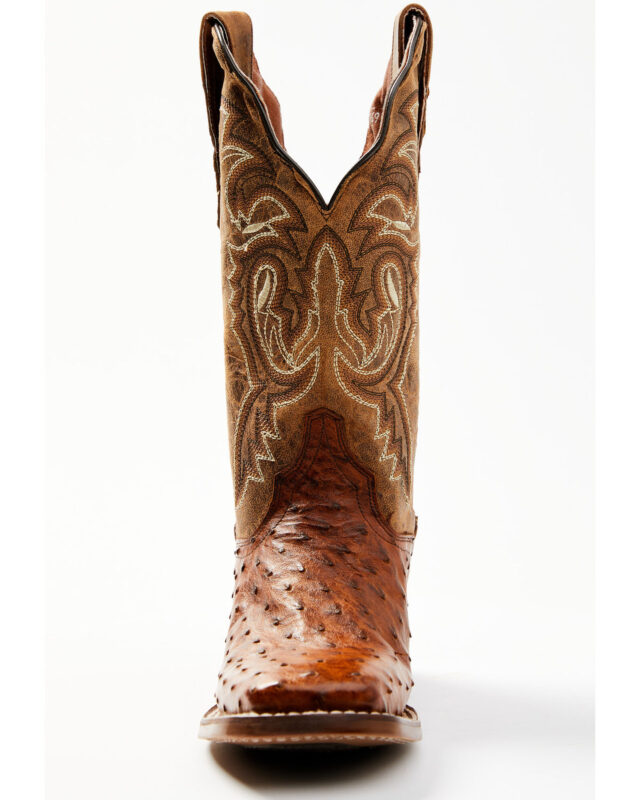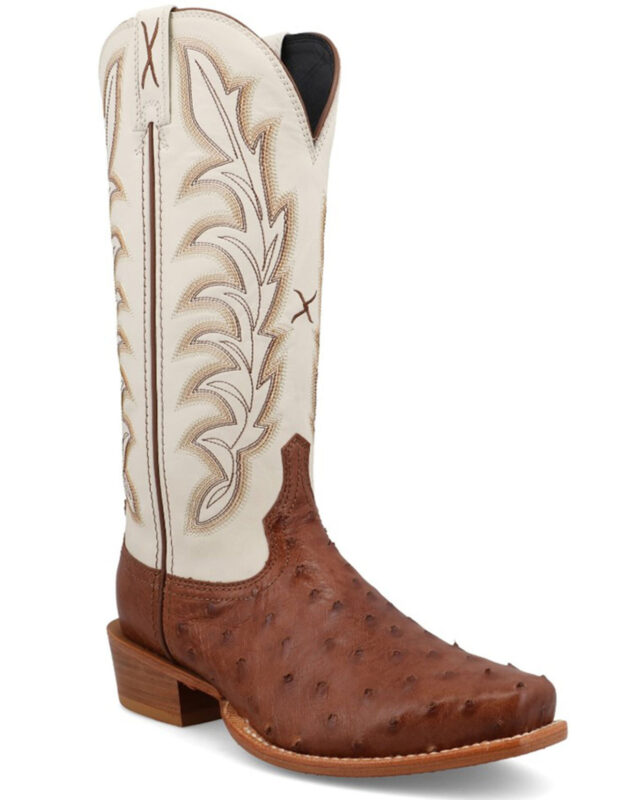Ostrich Boots
The Ultimate Guide to Ostrich Boots: History, Style, and Care 01
Ostrich boots have long been a staple in the world of luxury footwear. Known for their durability, comfort, and unique patterns, these boots are more than just a fashion statement—they are a testament to timeless craftsmanship. Whether you’re a seasoned cowboy boot enthusiast or a first-time buyer, this guide will take you through the fascinating history, styling tips, and care essentials for ostrich boots. With brands like Tony Lama ostrich boots and Ariat ostrich boots leading the market, there’s never been a better time to invest in these exotic leather treasures.
A Brief History of Ostrich Boots
The origins of ostrich skin boots trace back to Africa, where ostrich leather was first used for its strength and unique texture. Its export to Europe and North America introduced the material to luxury goods markets, where it became synonymous with high-end craftsmanship.
In the 20th century, ostrich leather gained popularity in Western culture, especially in the crafting of ostrich cowboy boots. Bootmakers like Tony Lama and Justin Boots recognized the leather’s potential for combining durability with striking aesthetics. Today, ostrich leather boots are a favorite among cowboys, ranchers, and style enthusiasts alike.
Why Choose Ostrich Boots?
1. Durability and Comfort
Ostrich leather is one of the most durable exotic leathers available. It is naturally resistant to cracking and tearing, making it ideal for boots that withstand heavy use. Additionally, the softness of the leather molds to your feet over time, offering unparalleled comfort.
2. Unique Texture and Style
Ostrich leather is distinguished by its “quill pattern,” a series of raised bumps resulting from feather follicles. This texture creates a unique and eye-catching appearance, making ostrich boots a luxury item for any wardrobe.
3. Versatility
Whether you’re dressing for a formal event or a casual outing, ostrich boots pair seamlessly with a variety of outfits. From black ostrich boots for sleek elegance to vibrant colors that stand out, these boots are as versatile as they are stylish.
Popular Ostrich Boot Styles
Ostrich Cowboy Boots
Western-style ostrich cowboy boots are a timeless choice for those seeking a classic look. Featuring high shafts, pointed toes, and intricate stitching, these boots are perfect for ranch work or line dancing.
Mens Ostrich Boots
Men’s boots often feature bold designs, rugged soles, and traditional colors like brown, tan, and black. They are ideal for both functional and fashion-forward purposes.
Black Ostrich Boots
For those who want a sleek and modern look, black ostrich boots are a top choice. These boots add a sophisticated touch to formal outfits and pair well with dark denim or dress pants.
JRC Ostrich Boots
Known for their premium craftsmanship, JRC ostrich boots offer a combination of style and durability. Their quill patterns and fine stitching make them stand out in any crowd.
Top Brands for Boots
When shopping for ostrich leather boots, quality matters. Here are some of the top brands to consider:
- Tony Lama Ostrich Boots: Renowned for their traditional Western design and exceptional craftsmanship.
- Ariat Ostrich Boots: Perfect for those who prioritize comfort without sacrificing style. Ariat combines modern technology with classic designs.
- Lucchese Ostrich Boots: A luxury brand known for handcrafting boots with premium ostrich leather.
- JRC Ostrich Boots: Known for their durability and unique patterns, JRC is a favorite among boot enthusiasts.
How to Style Ostrich Boots
Casual Looks
Pair your boots with jeans and a flannel shirt for a laid-back, rustic vibe. For warmer weather, opt for a lightweight button-up shirt to keep the look fresh and functional.
Semi-Formal Outfits
Combine mens ostrich boots with dark denim, a blazer, and a crisp white shirt for a polished yet relaxed style. Adding a leather belt that matches your boots can tie the whole outfit together.
Formal Events
For formal occasions, black ostrich are an excellent choice. Wear them with tailored trousers and a blazer or suit to create a refined look that stands out.
Caring for Your Ostrich Boots
Proper care is essential to maintain the beauty and longevity of your boots. Follow these tips to keep them looking their best:
1. Cleaning
- Use a soft, damp cloth to wipe away dirt and dust after each use.
- Avoid using harsh chemicals that can damage the leather.
2. Conditioning
- Apply a leather conditioner specifically designed for exotic leathers to keep the leather soft and supple.
- Condition your boots every 2–3 months to prevent drying and cracking.
3. Polishing
- Use a neutral or color-matched polish to enhance the leather’s shine.
- Apply polish sparingly to avoid clogging the quill pattern.
4. Storage
- Store your boots in a cool, dry place away from direct sunlight.
- Use boot trees to maintain their shape and prevent creasing.
Are Ostrich Boots Worth the Investment?
Absolutely. While ostrich skin boots come with a higher price tag, their durability, comfort, and timeless style make them a worthwhile investment. Whether you’re wearing them on the ranch, to a formal event, or simply as a statement piece, these boots are built to last for years.
FAQs
What makes ostrich boot unique?
Ostrich leather is known for its durability, softness, and distinct quill pattern, making it a standout choice for high-end boots.
How do I clean ostrich cowboy boots?
Wipe them with a damp cloth, condition them regularly with exotic leather conditioner, and avoid using harsh chemicals.
Are boots comfortable for all-day wear?
Yes, ostrich leather molds to your feet over time, offering exceptional comfort for extended wear.
What are the best brands for ostrich leather boots?
Top brands include Tony Lama, Ariat, Lucchese, and JRC for their quality craftsmanship and design.
Can I wear ostrich boots in the rain?
While ostrich leather is durable, prolonged exposure to water can damage it. Use a water-repellent spray to protect your boots.
Do ostrich boots require special maintenance?
Yes, regular cleaning, conditioning, and proper storage are essential to maintaining their beauty and longevity.


